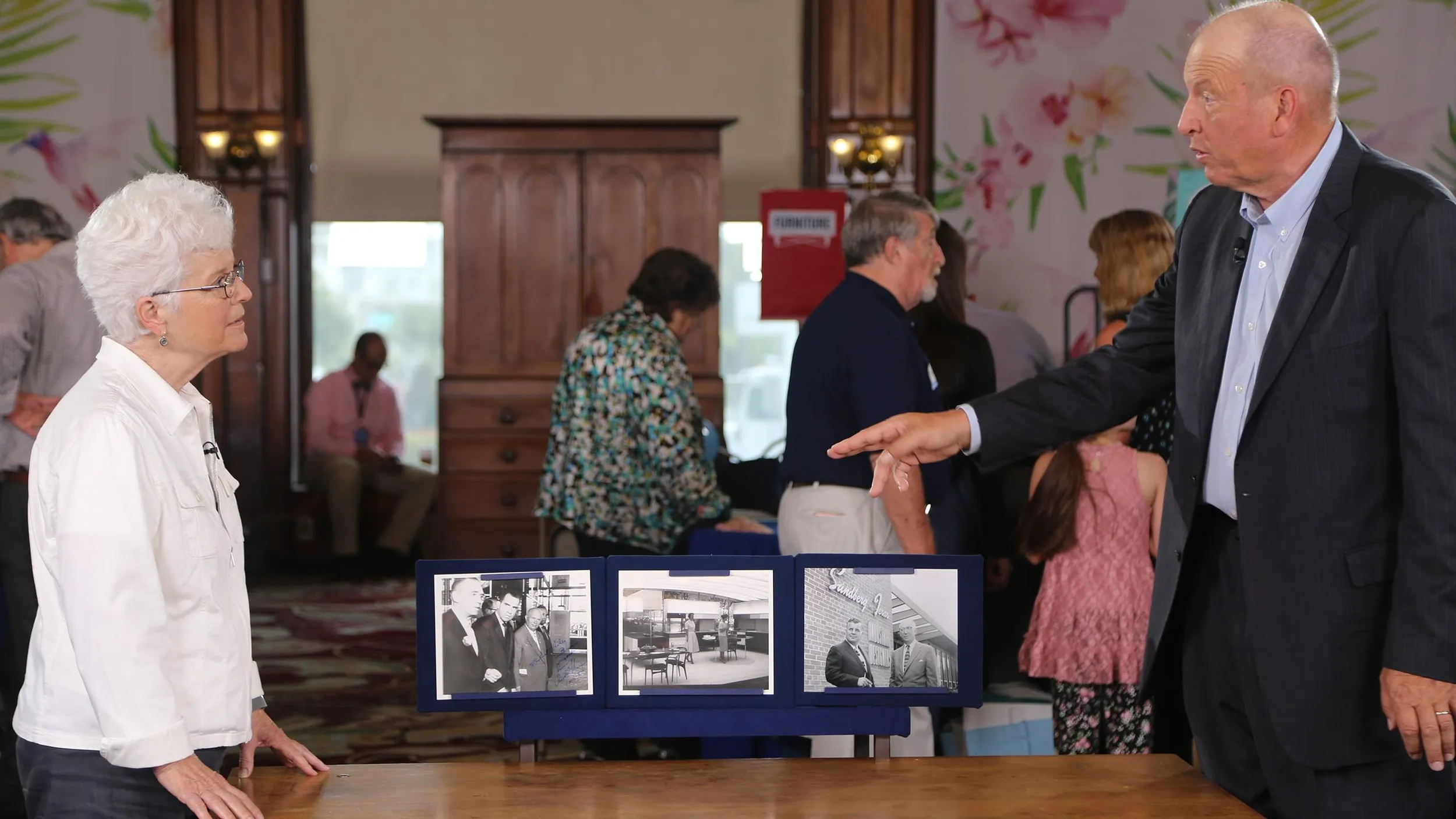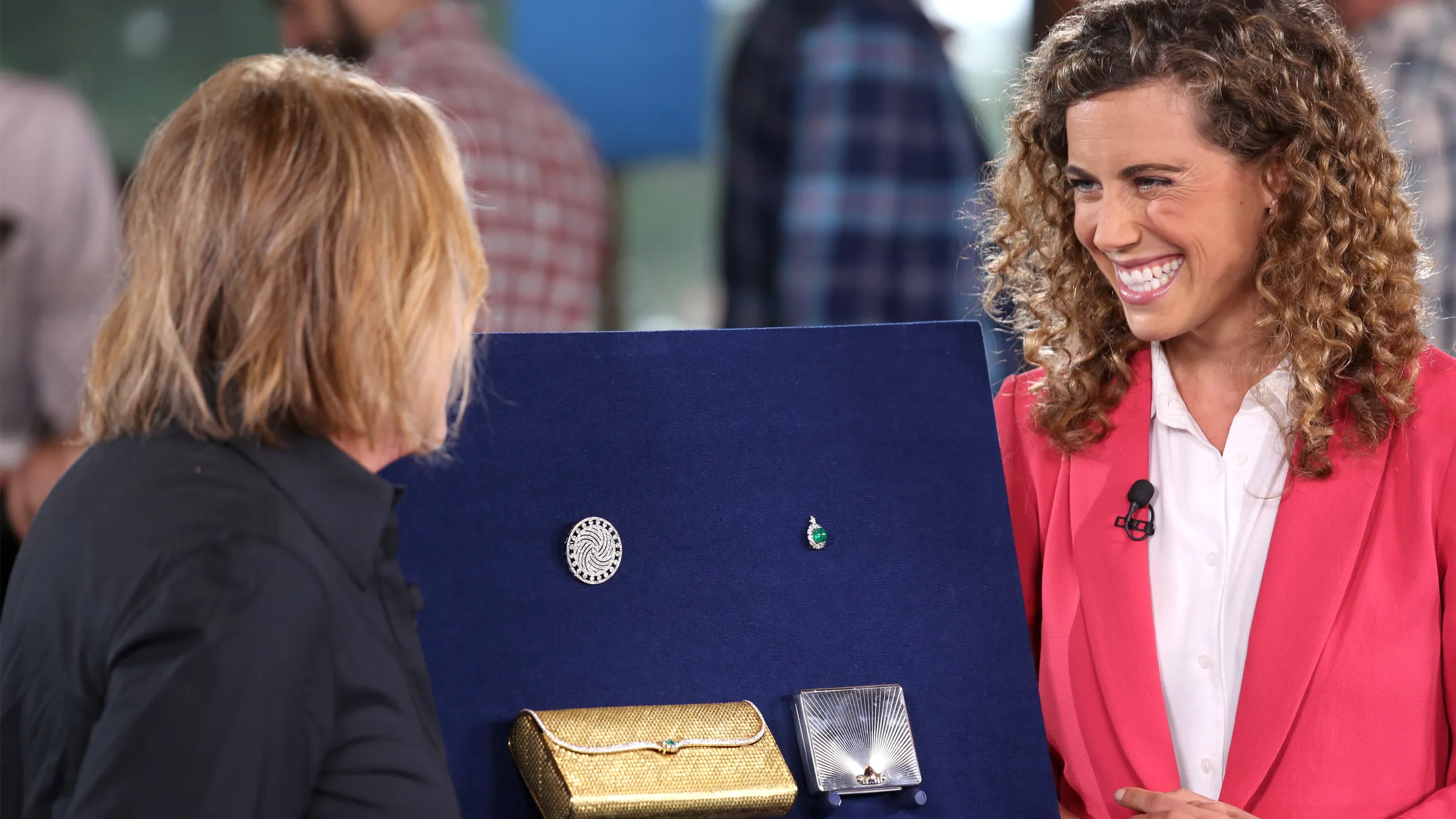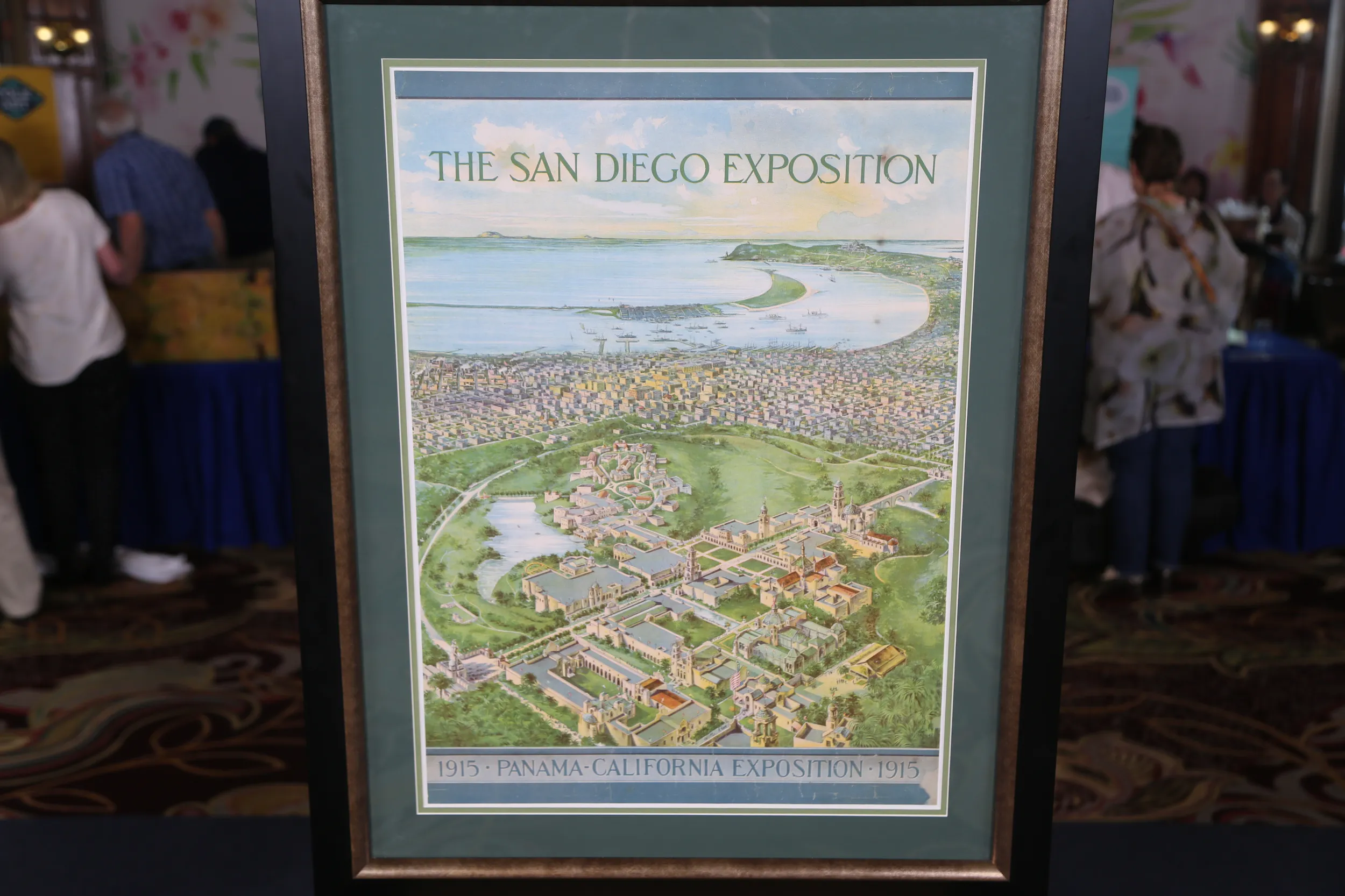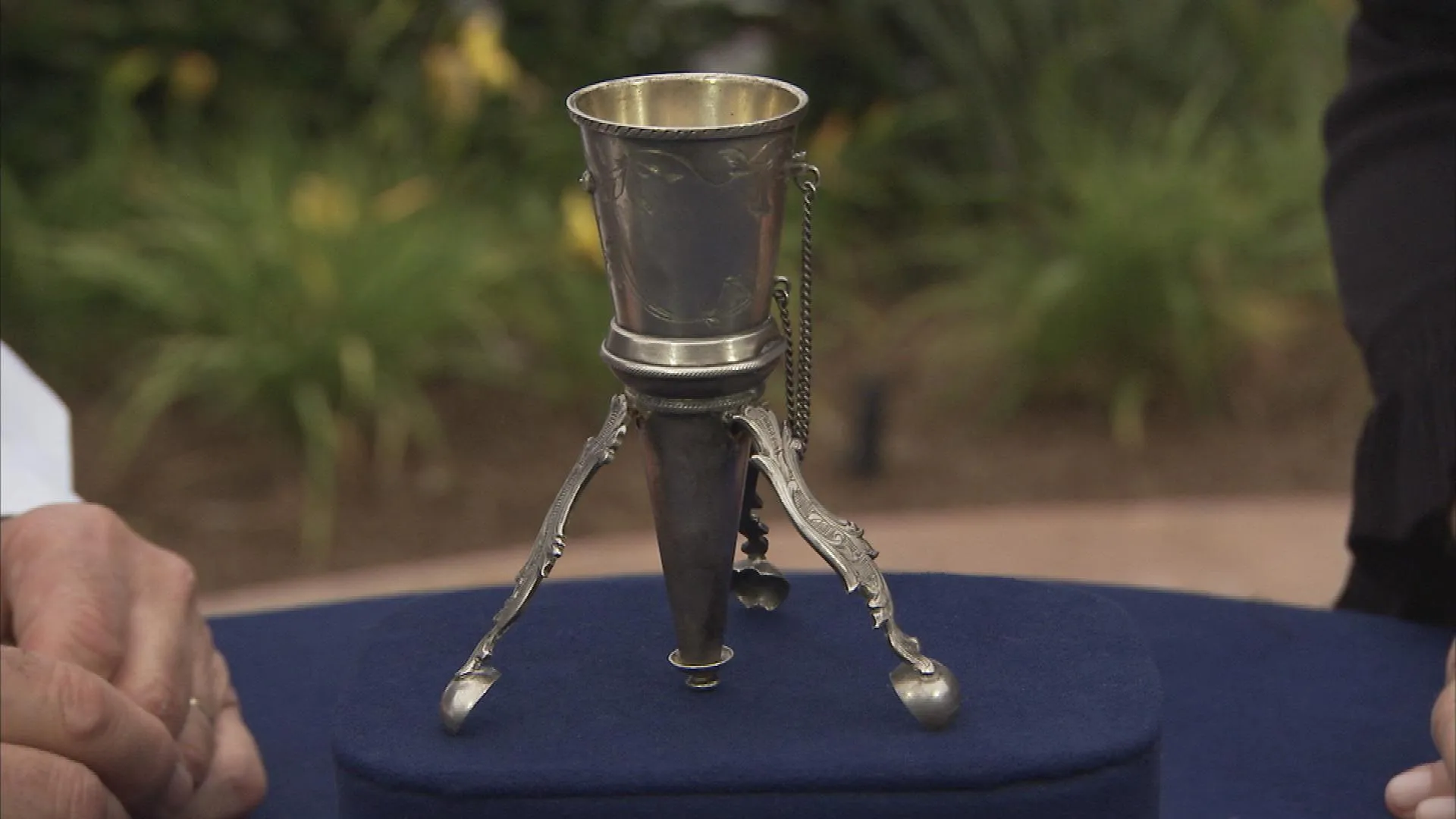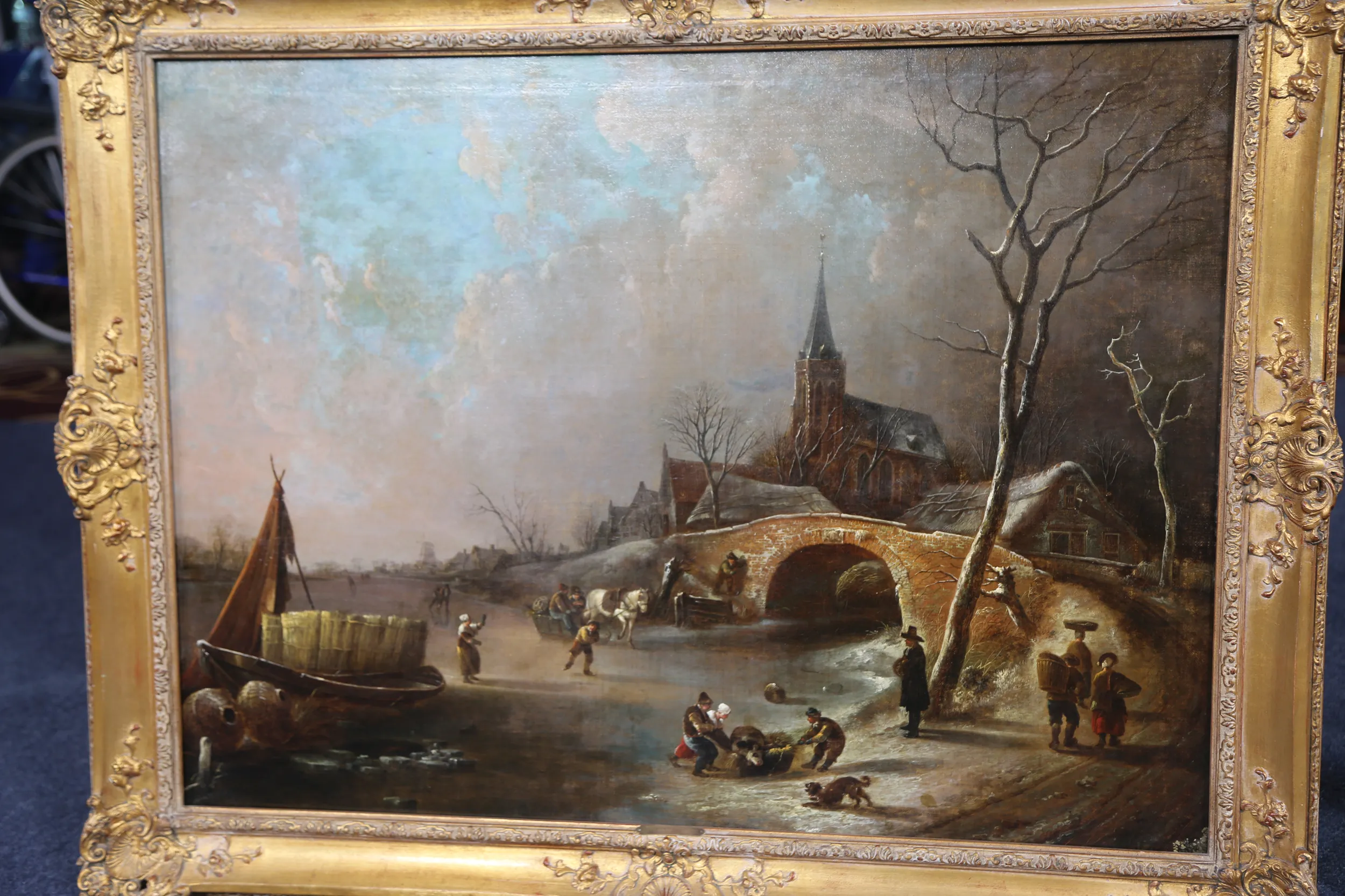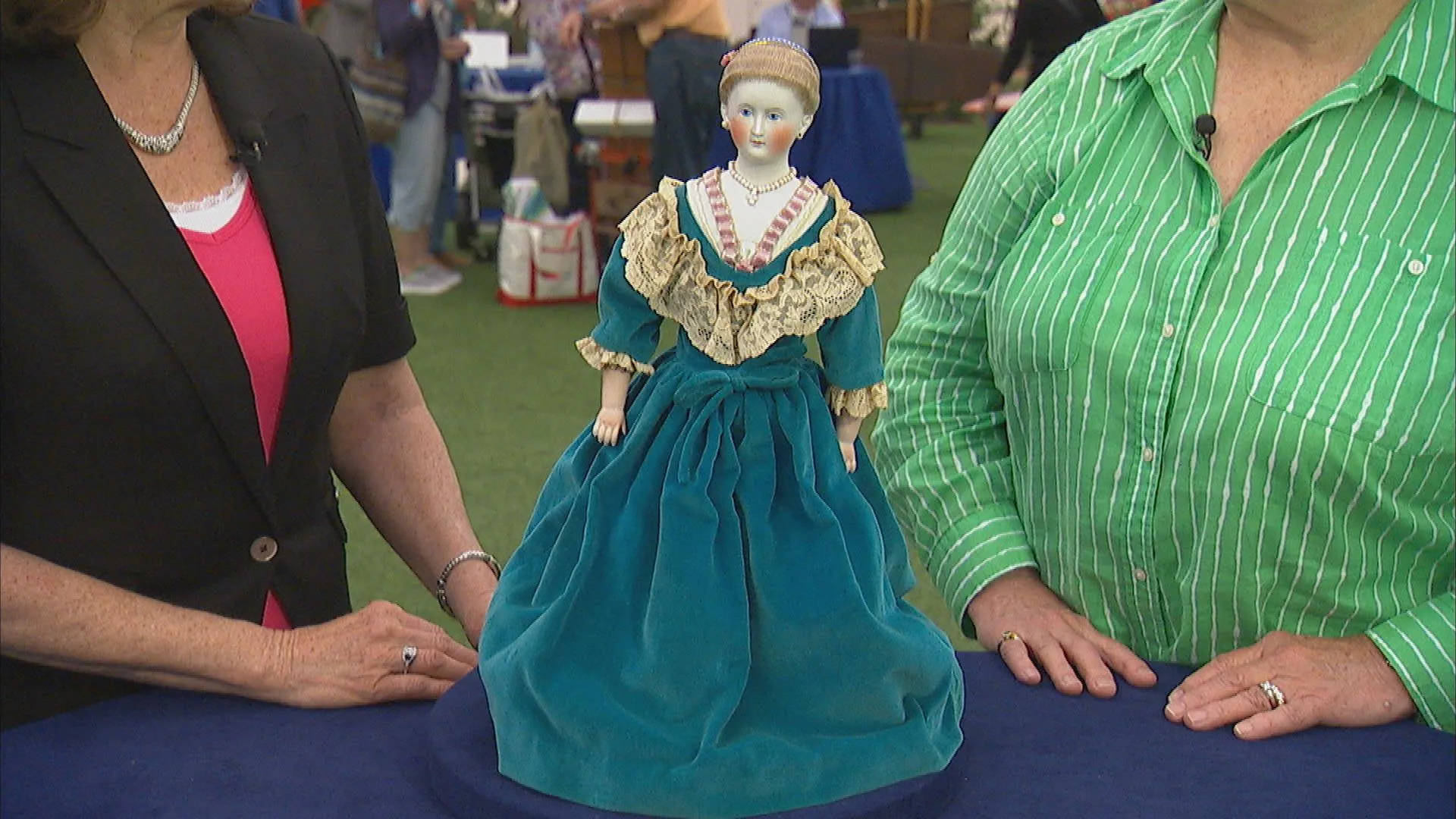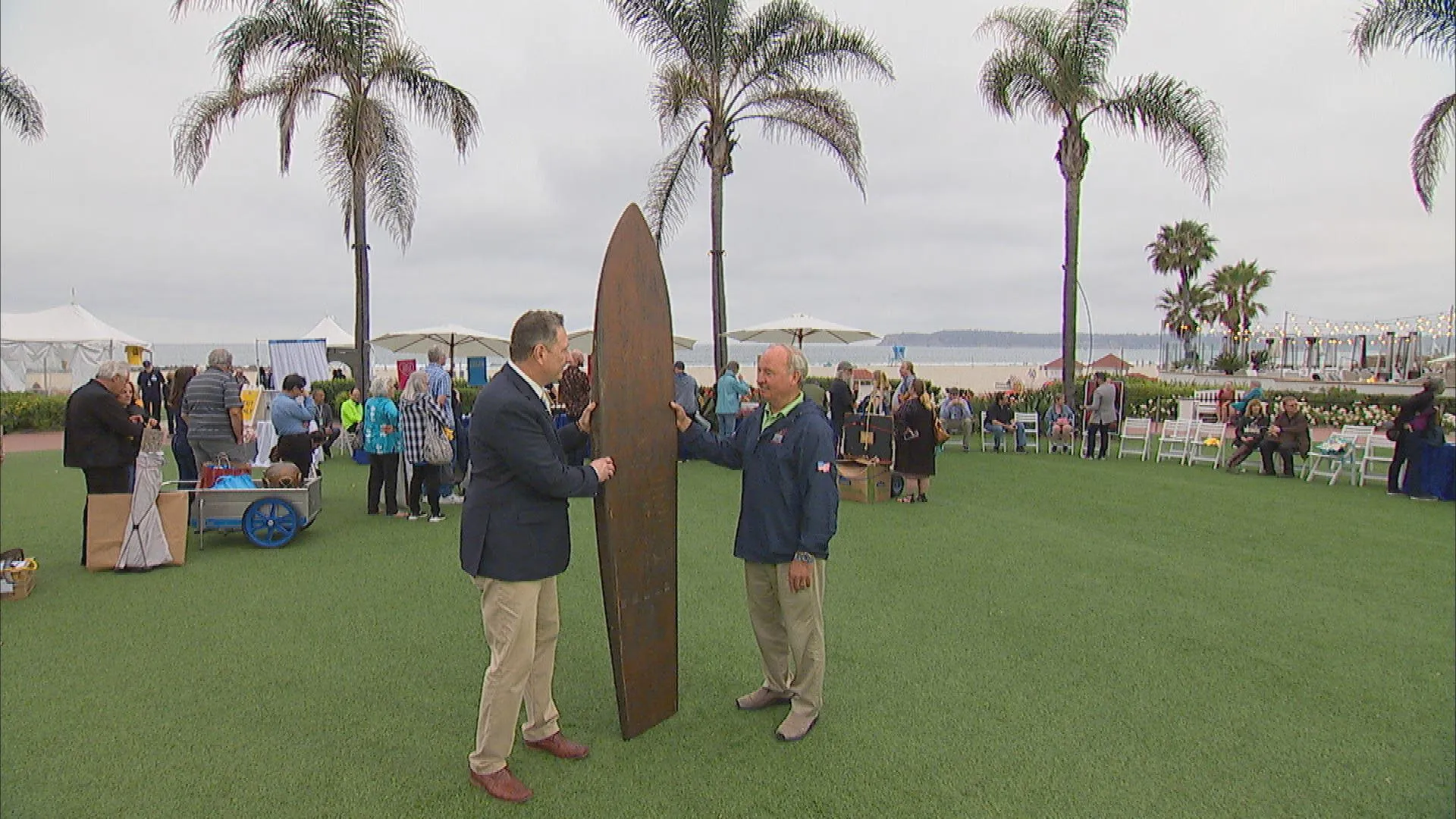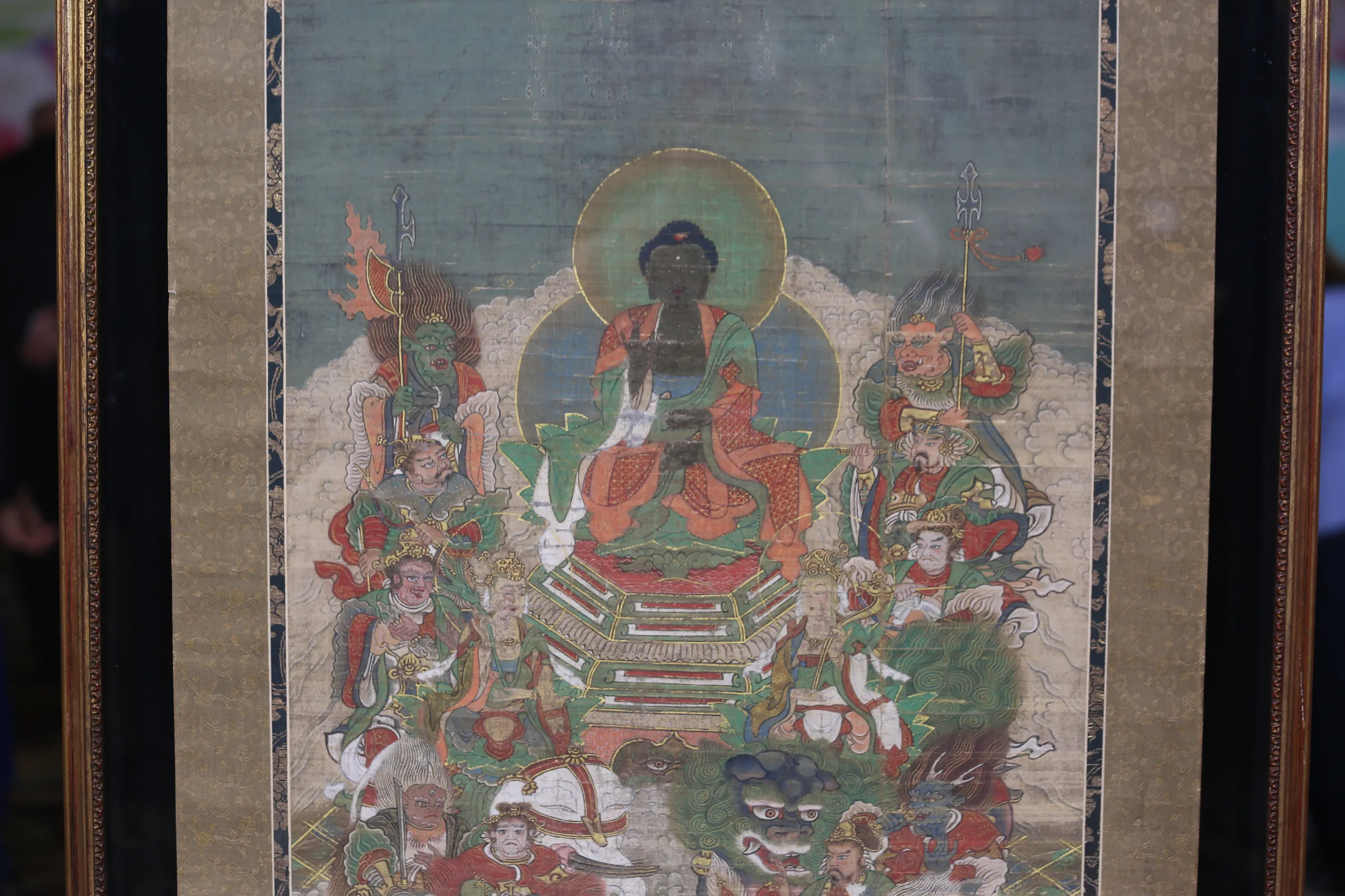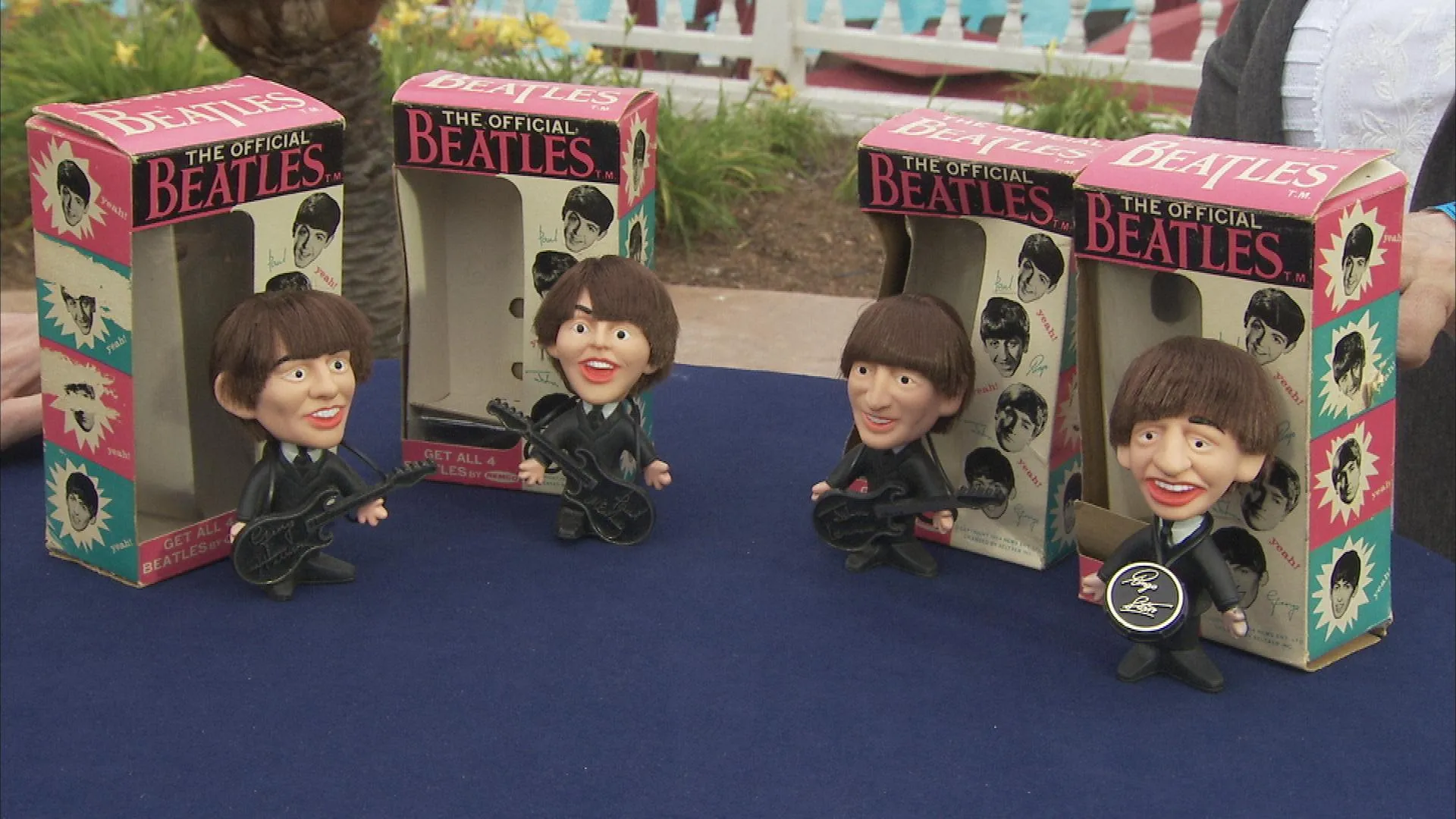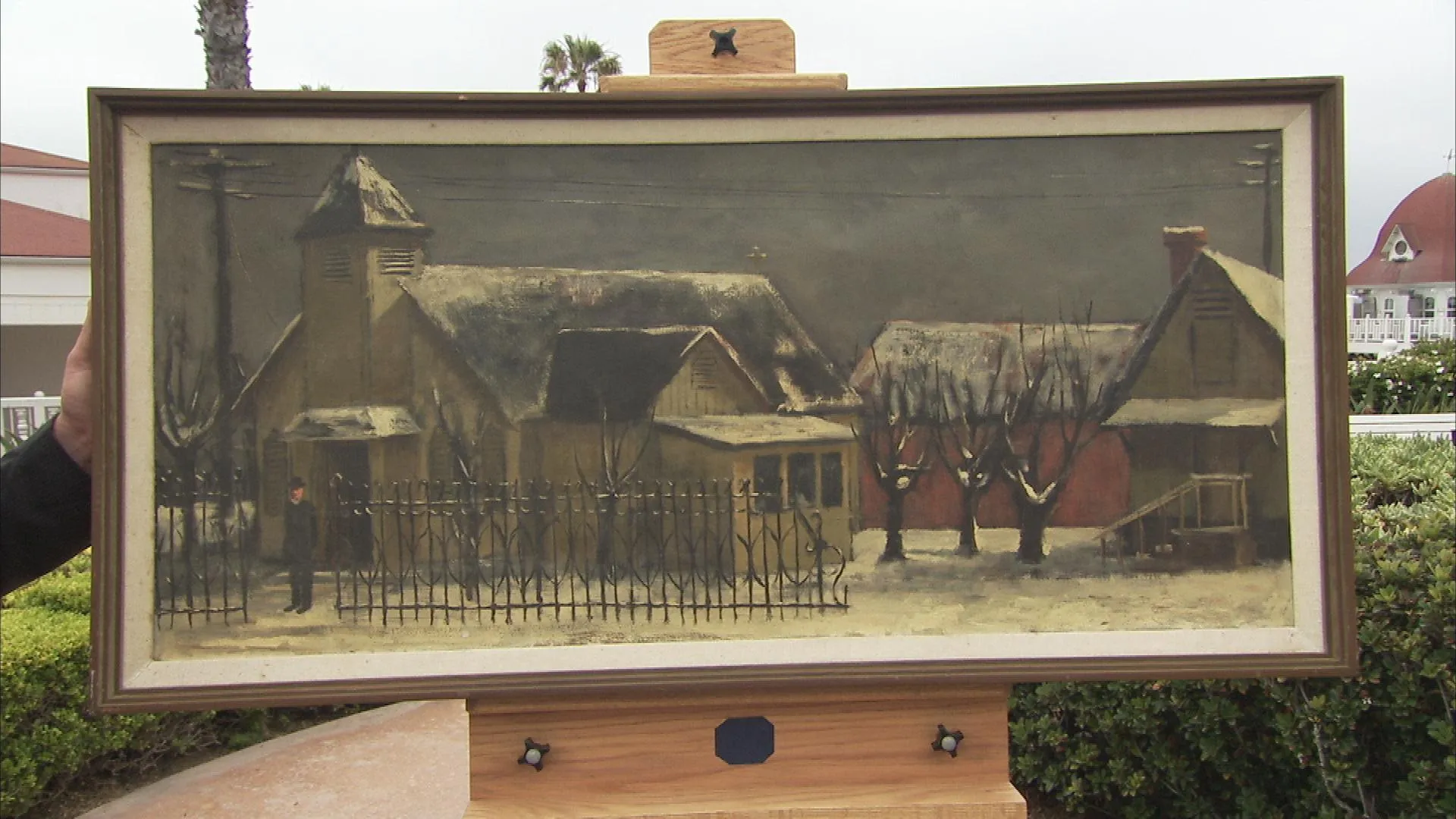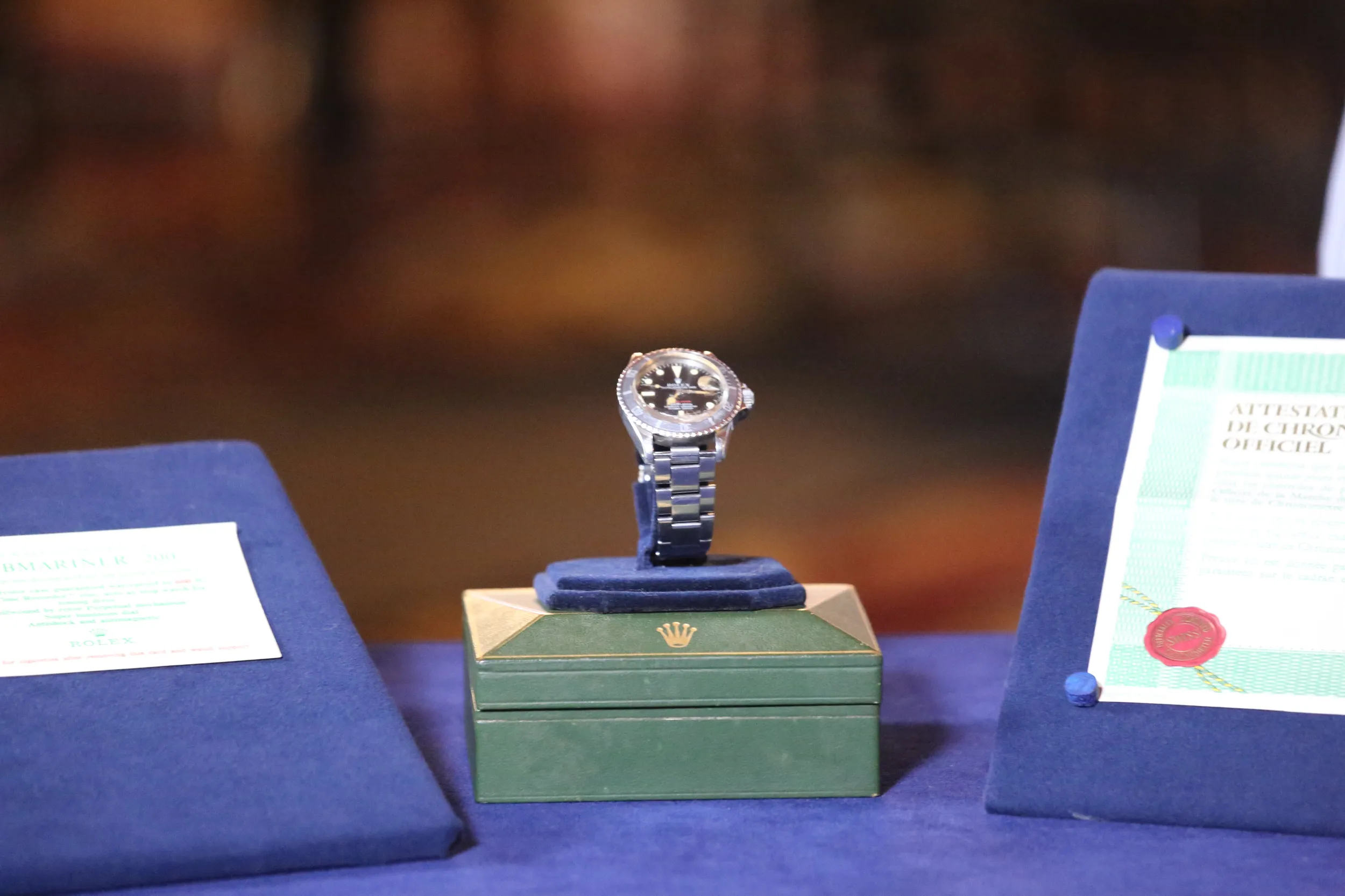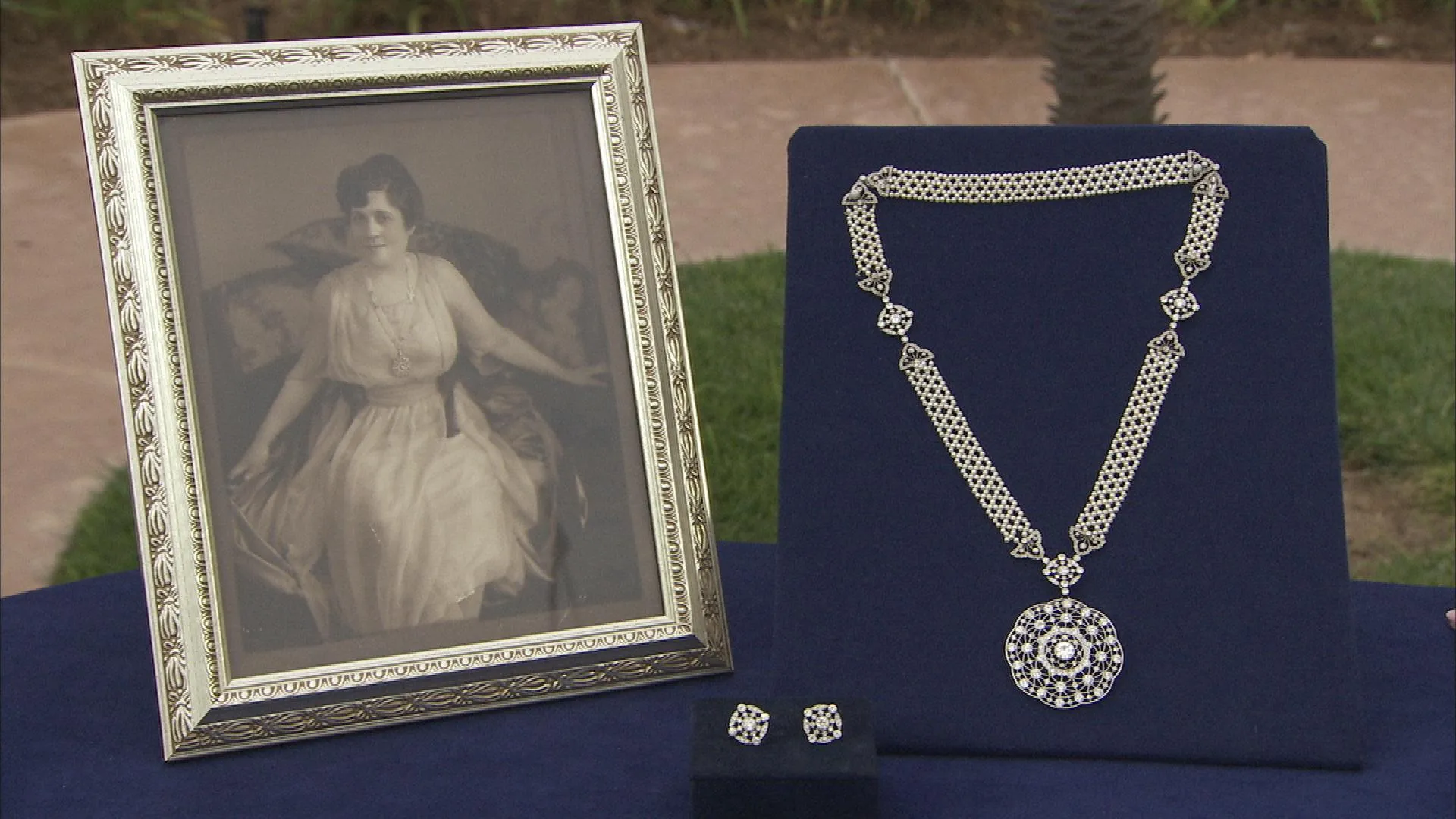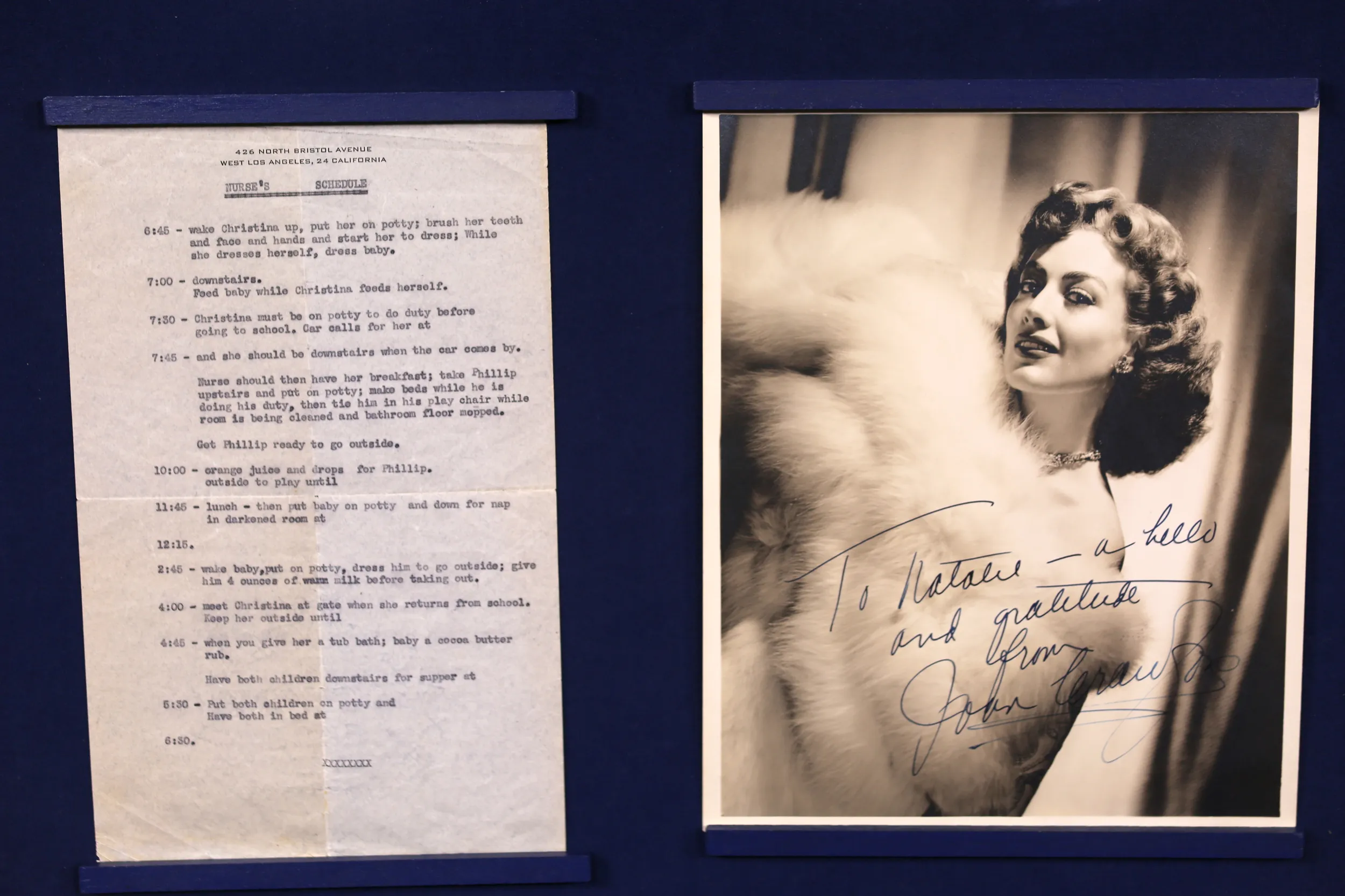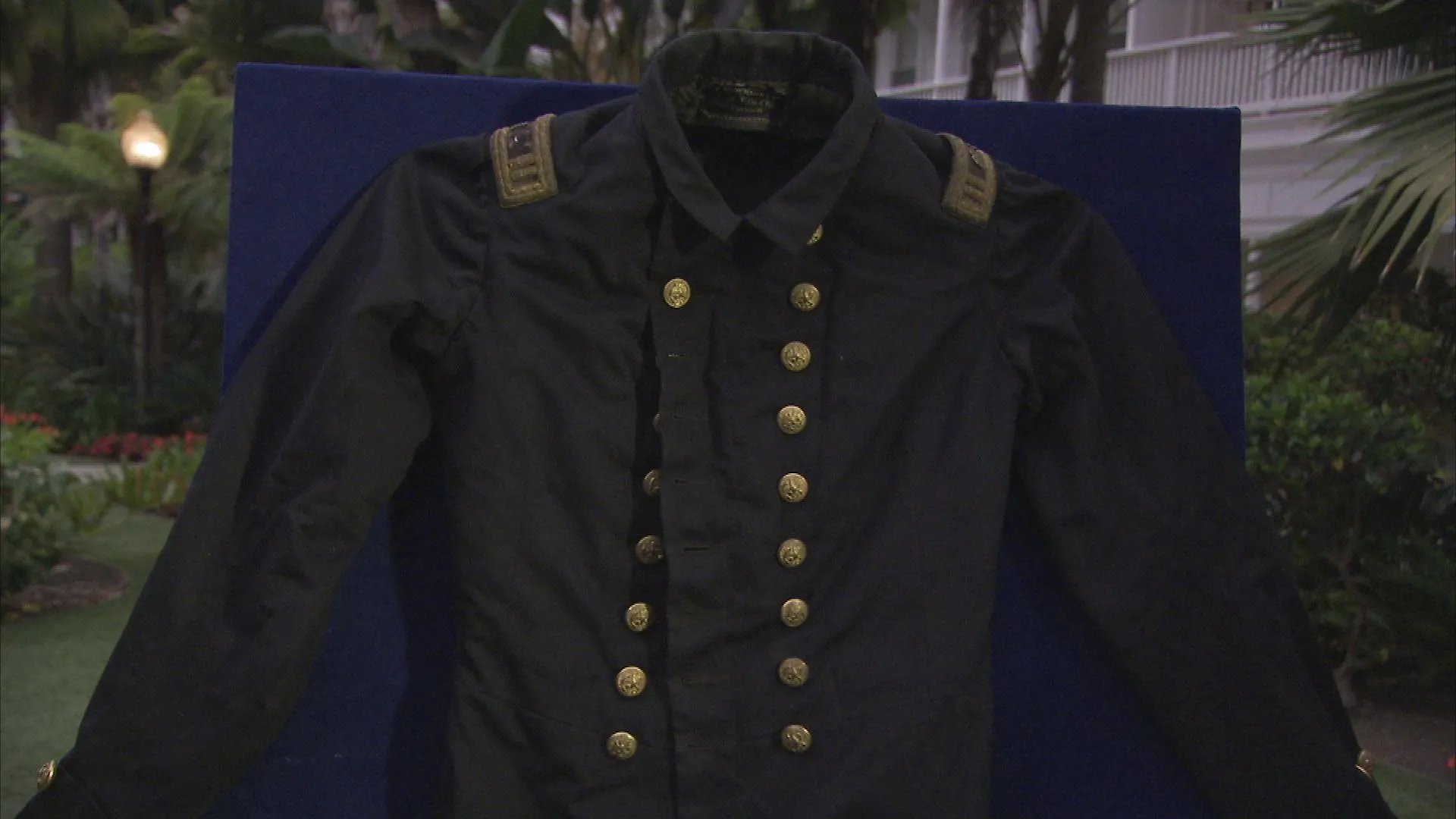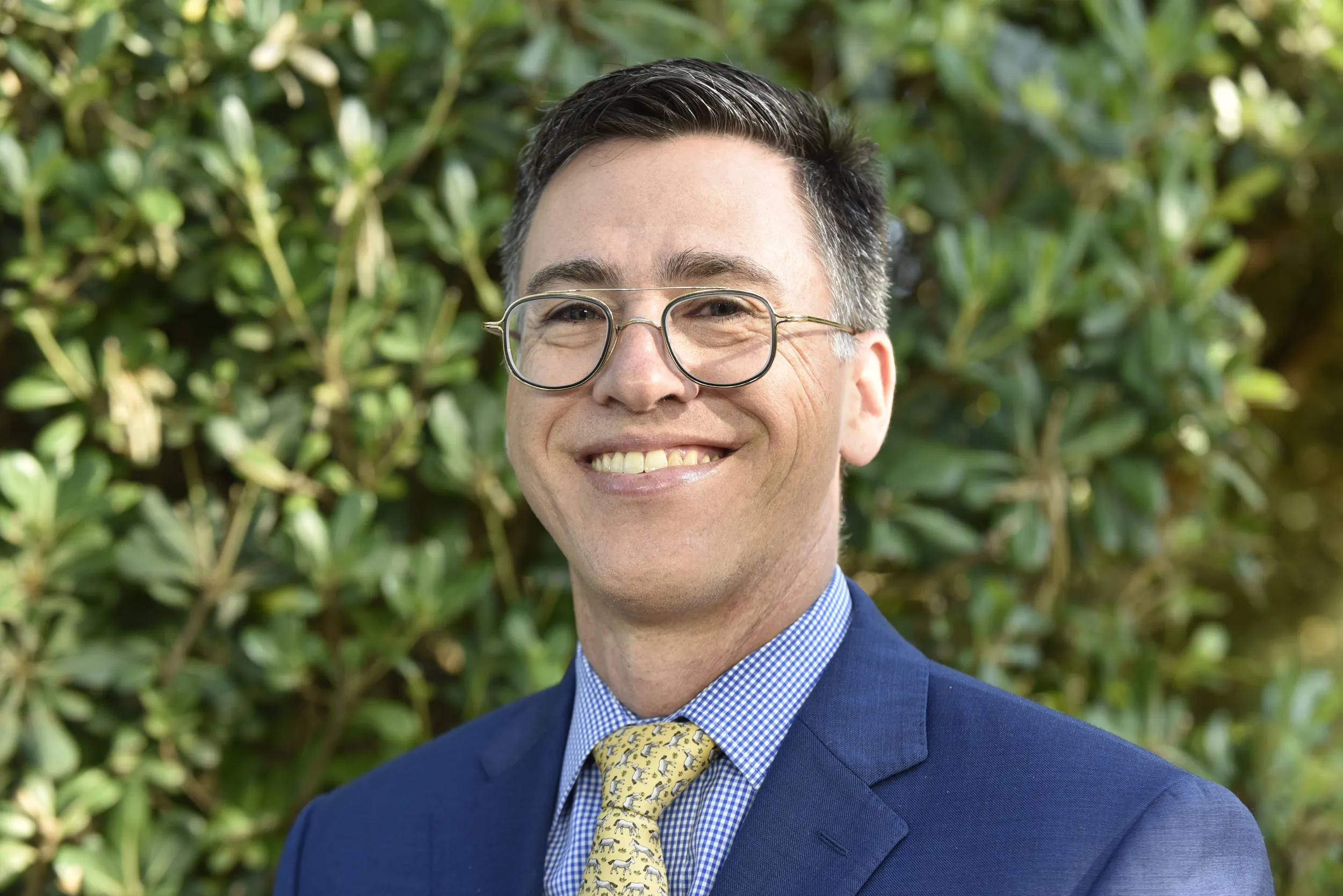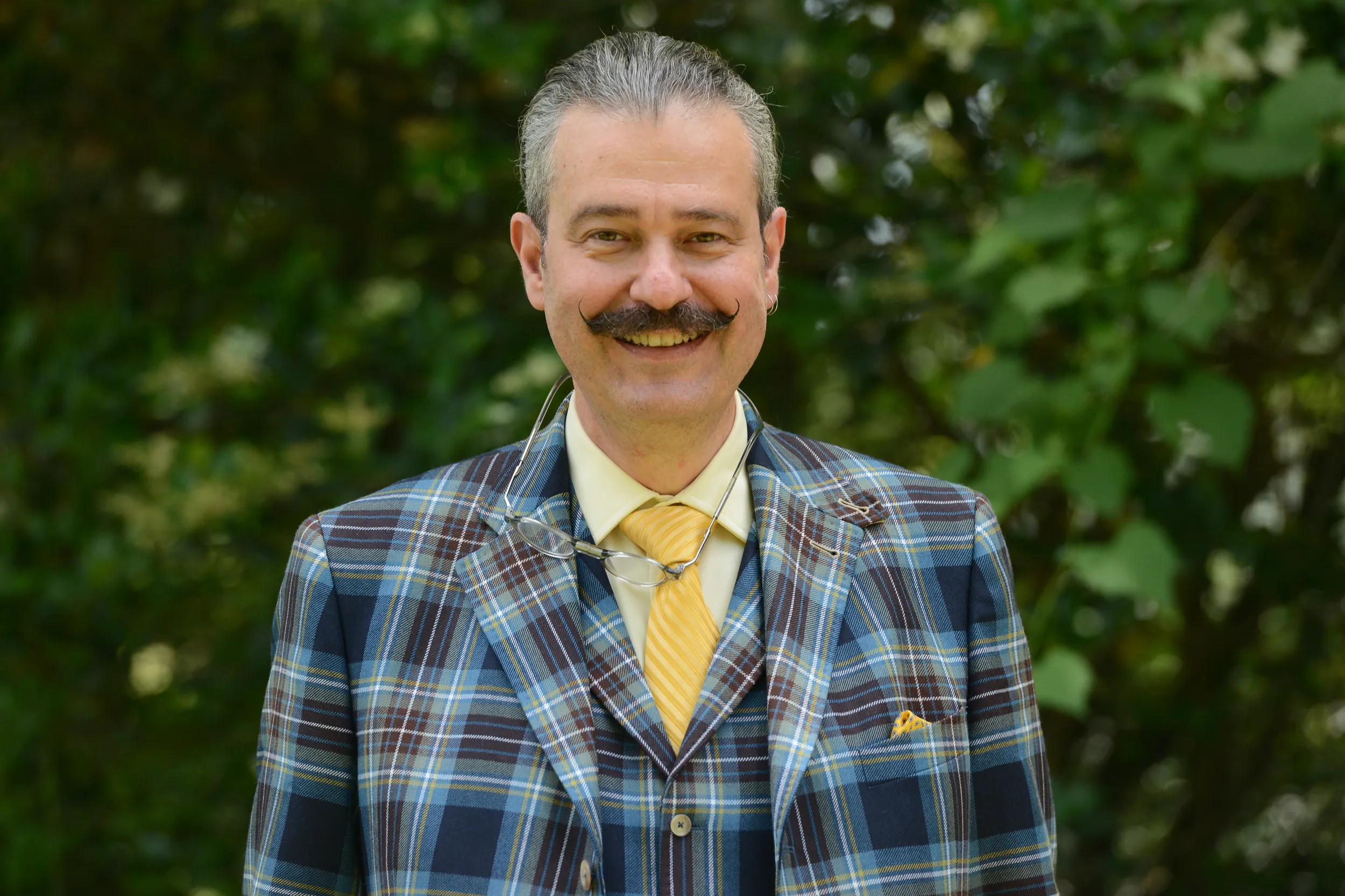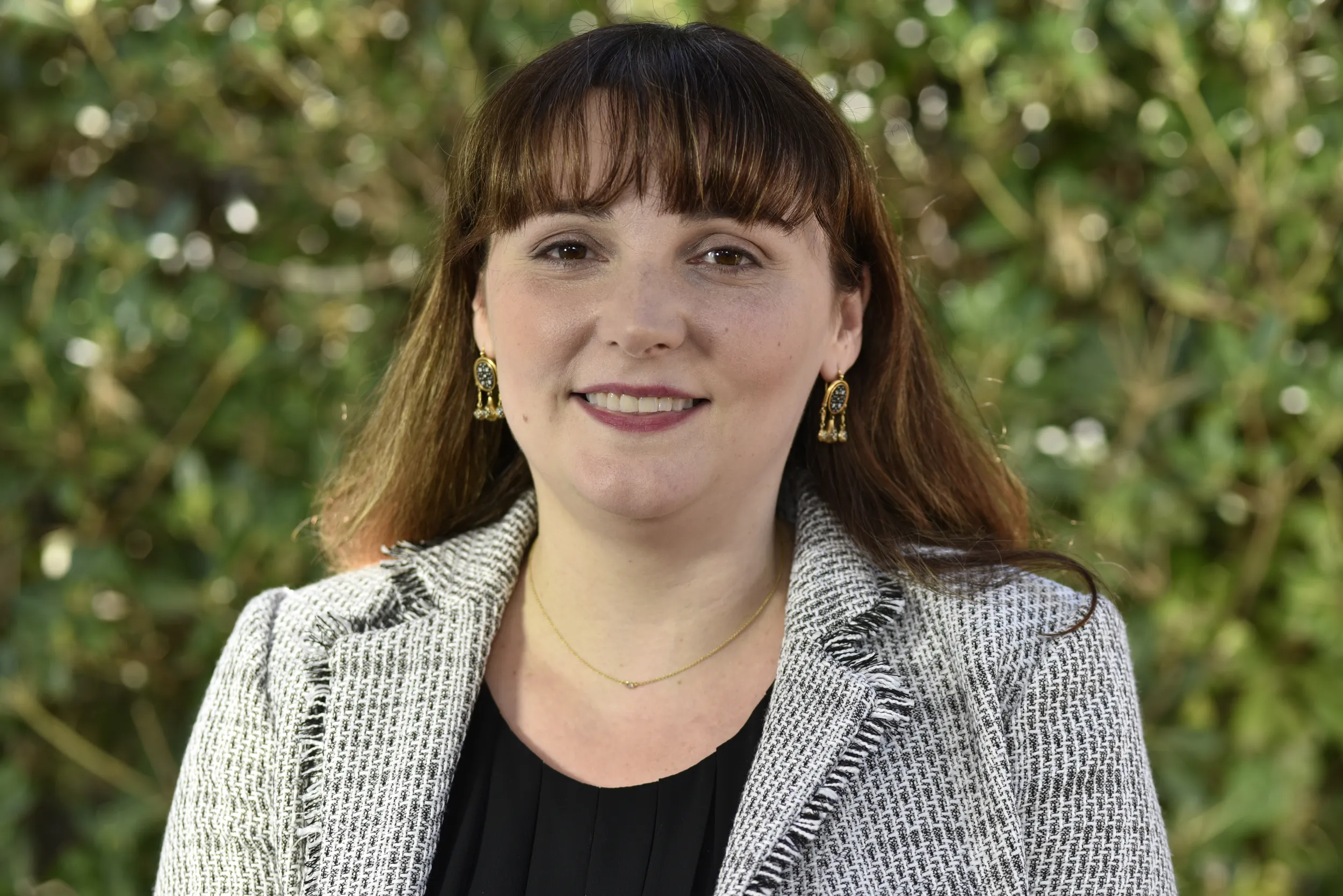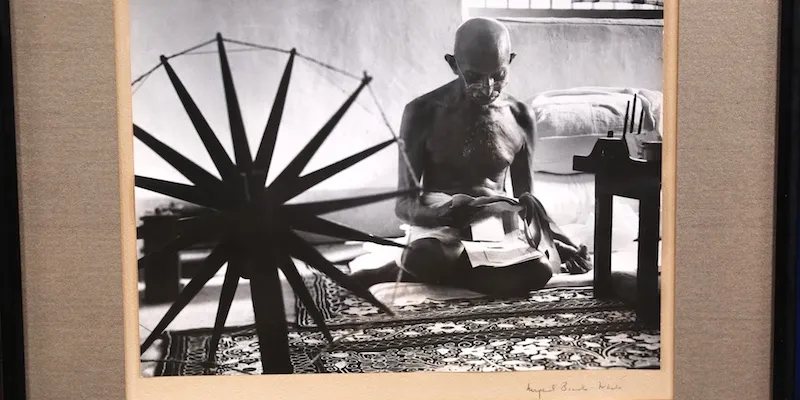HOST: ANTIQUES ROADSHOW is finding amazing treasures at the Hotel del Coronado in Coronado, California.
GUEST: I was going to sell it to buy a new horse, because I'm a cowboy guy.
GUEST: That's amazing. I think I'll keep going to yard sales!
HOST: Since the late 1880s, the main attraction of the island city of Coronado has been the Hotel del Coronado. Illinois architect James Reid designed the hotel, creating a grand, Queen Anne-style building that was furnished in a manner considered to be the height of Victorian-era elegance and refinement. The Del, as it's called, is now a national historic landmark, and remains a magnet for travelers looking for adventure and relaxation in the Golden State. Today, thousands of ROADSHOW fans have gathered here seeking information about their treasures.
APPRAISER: This is German, just about 100 years old.
APPRAISER: There might have been a hole at one point.
GUEST: Oh. Yeah.
GUEST: This is an Ike dress that my mother wore in the '52 election.
APPRAISER: It was made for a one-time event, you know. It wasn't something anybody thought would be saved. It's definitely something that either a fashion person or someone who collects political memorabilia would be interested in. I would put a retail value on this in the $400 to $500 range, yeah.
GUEST: Fantastic.
APPRAISER: You worked on "Alien"?
GUEST: I didn't work on the movie, I worked post-production, and publicity and marketing. The film had only been in production for three weeks when we made this.
APPRAISER: Oh, wow. People love "Alien." I'd put an auction estimate of around $1,000, $1,500.
GUEST: That's great.
APPRAISER: Because most of these photographs don't exist anywhere else.
GUEST: Okay, yeah.
GUEST: I bought it at a thrift shop, and I paid $14.56 for it.
APPRAISER: It is probably from the 1970s, it's artist-signed by Eva Englund, who worked for Orrefors, and it is a Graal vase. It has a lot of things going for it.
GUEST: Mm-hmm.
APPRAISER: Yeah. The color, and it's very exuberant, very expressionistic in the design. Orrefors is the great glass out of Sweden, the top-of-the-line glass.
GUEST: Right.
APPRAISER: And there is a market for it, and the market's growing, because people are decorating more in late-20th-century furniture. And with their furniture, they want to match their decorative arts.
GUEST: Oh.
APPRAISER: I think that in a retail venue, something like this could sell for between $2,000 and $3,000.
GUEST: (laughing) Well, I had seen some things that were selling from $500 to $600, and I thought that would be great, so...
APPRAISER: This is better!
GUEST: (laughing): It's better.
GUEST: Well, it's a poster from the 1915 California Exposition that was held in San Diego. And I'm hoping that it's an original poster. I was at a fundraiser for a theater in San Diego, and they had many posters and paintings. And there aren't many things that have "San Diego" up there in the title, and I grew up here, so I bid on it, and I bought it. We had just moved into a new home, and we're up on the top of a hill, and the view from our home is basically this view.
APPRAISER: And how much did you pay for it?
GUEST: I paid $3,000.
APPRAISER: And when was this?
GUEST: 2006.
APPRAISER: Now, I'm from New York City, so when I see this view, it really doesn't speak to me...
GUEST: Yes.
APPRAISER: ...the way it would speak to you.
GUEST: Yes.
APPRAISER: In fact, I had to be shown where on this map the Hotel del Coronado is.
GUEST: Yes.
APPRAISER: And we located it right there.
GUEST: Yes, right there on the island.
APPRAISER: And I had to be told that this is an image of Balboa Park.
GUEST: Correct.
APPRAISER: The technical term for something like this is a bird's-eye view. It's a bird's-eye view of the Panama-California Exposition, with a view of San Diego and the environs. The Panama-California Exposition took place at the same time as the Panama-Pacific Exposition took place in San Francisco. That was a giant World's Fair. The exposition in San Diego was substantially smaller. The reason of the name the Panama-California Exposition was, the fair was held upon the opening of the Panama Canal. And as ships went through the Panama Canal and sailed north, San Diego was the first U.S. harbor that they hit. So that was the reason for the fair in 1915. If the poster's not real, it's worth a lot less than if it's original.
GUEST: Absolutely, yes.
APPRAISER: No copies have come up for sale. The only copy I could find is in the California State Library.
GUEST: Wow.
APPRAISER: So it's rare.
GUEST: Yeah.
APPRAISER: And usually, when pieces like this are reproduced, they are reproduced with all their original blemishes. So, for example, there is a piece of missing paper down here.
GUEST: Yeah.
APPRAISER: And when they're reproduced, that loss is reproduced, also. When it's reproduced, these crinkles are reproduced, too. And we looked at it, and we're, like, "It doesn't look good." And then we looked at it closer and closer, and we realized in fact that it is original. That this is not a reproduction of a loss-- that's the actual loss. And these are not reproductions of wrinkles, those are actual wrinkles. We don't know who the printer was or where it was printed, but almost always these exposition posters were printed in the city of the exposition.
GUEST: Mm-hmm, right.
APPRAISER: So it was almost certainly printed here in San Diego. It's not in great condition. And, I'm not going to lie, I mean, $3,000 is a lot of money. But because of the rarity, and I think because of the interest in people who collect these kind of things, I would put a conservative auction estimate on there between $6,000 and $9,000.
GUEST: Wow. (chuckling): Wow.
HOST: Travelers have enjoyed the beaches on Coronado for many generations. And indeed, the Hotel del Coronado was promoted in a late-19th-century brochure as "The Paradise of the Pacific."
GUEST: I bought it at a neighborhood yard sale from a lady, and she said it was her mom's and maybe her grandma's.
APPRAISER: Do you know what it is?
GUEST: Well... (laughs) We have several bets on this. My girlfriend thinks it's a bouquet holder, and I think it's a shot glass.
APPRAISER: All right. Now, how much is the bet?
GUEST: (laughing) A trip. I've got a lot riding on this. A girl's glam camping trip.
APPRAISER: Well, you owe your friend a trip. Let's turn it over and I'll show you what I mean. It's, it is a bouquet holder, and you would hold it like this, you know, if you were a young lady.
GUEST: Okay.
APPRAISER: Unmarried, most likely, in about 1895 to 1900.
GUEST: Okay.
APPRAISER: We sometimes call these nosegays. And a nosegay, as it suggests, is designed to bring a bouquet to your nose. It's less about having a beautiful floral display as it is about having something to perhaps relieve the unpleasant odors that surround you in the 1890s. Now, nosegays spend much of their life not in someone's hand but sitting on a tabletop or something. This one has its own integral stand. So this is an unusual feature, and a clever one. It bears marks on it here which identify it as Russian. These are Russian silversmith's marks. Any Russian silver of this time is of great quality and really quite rare. You said you paid how much for it?
GUEST: Five dollars.
APPRAISER: If it showed up in an antique shop, we think about $1,000, and maybe perhaps $1,500.
GUEST: That is amazing. Mm-hmm. That's amazing. I think I'll keep going to yard sales. (laughs)
GUEST: It's a Dutch painting. It's been in my family for about 60 years. It was purchased by my grandfather in Michigan. My mother inherited it, and then I inherited it from my mother.
APPRAISER: Do you know how much... for how much he purchased the painting?
GUEST: Oh, I have no idea.
APPRAISER: And do you know who the artist is?
GUEST: Well, it's attributed... There's a plaque on it that says, "Andries Vermeulen," and I did look him up once. He's a Dutch painter of the late 1700s, early 1800s.
APPRAISER: On the back of the painting there are about three or four different labels. Some of those labels are from some major galleries. One of them is from Frost & Reed Gallery in London, which has been in business since 1808. It's a well-known gallery with a very good reputation. Some of the other labels, including another one from Daniel Rees in Michigan, mean that people have accepted this work to be by the artist. However, when you have a painting that does not have a signature, then you're sometimes relying on what the other... the last person said, and you're also relying on your own study, and you're putting your own reputation on the line. When you are putting a label onto the back of a painting, it's saying, "Yes, this is by this artist." So it's kind of like peer review, everyone is together in this. The quality of this painting, it's extremely well painted. The painting is oil on canvas. The canvas at one point has been re-lined. This painting would have been painted in around 1800. It has all of the little details that you want in these Dutch skating scenes. Little pieces of life happening in every little corner. The age of the canvas, the age of the paint itself, also lends credence to the authenticity of the painting. So all of these things together-- the good provenance, the gallery labels, the exceptional quality -- do help us to know that this is an authentic work by the artist.
GUEST: Wow! (laughing)
APPRAISER: Do you know how much it might be worth?
GUEST: My mother had it appraised. His statement at the time was, if it was of the school, it would have been about $8,000, $8,000 to $10,000, somewhere in there. And then if it was truly a Vermeulen, it was maybe $30,000.
APPRAISER: And when was this?
GUEST: I believe this was in '92.
APPRAISER: What's interesting is that the market for 19th-century Dutch works and 18th-century Dutch works has fallen a little bit since the 1990s and the early 2000s. However, if I were to put this painting at auction today, I would put a conservative auction estimate of $10,000 to $15,000 on it.
GUEST: Okay, okay.
GUEST: This is a piece that my grandfather picked up on his travels to Europe.
APPRAISER: He opens up, he has little drawers inside, super-cute, and it's just a darling size.
APPRAISER: This is an honorific mark showing that it was made in the Ming Dynasty, but it actually wasn't. This was made in the Guangxu period. Most of these are not as nice as this. This one's really terrific.
GUEST: Her name is Alma Doerge. Yeah, we put some research in, she was a... like, a Broadway actress around the turn of the century, 1880s. That's about all we know.
GUEST: I've brought my great-grandmother's parian doll. My grandmother was going to give it to me, but my mother didn't think I deserved it, that I was too young and wouldn't appreciate it. So my mother held it for quite a while.
APPRAISER: Right.
GUEST: And then gave it to me. I've had it about the last 20 years.
APPRAISER: They are referred to as a parian doll, they're also called untinted bisque, because she has a white bisque face. She is German. She dates from the 1870s. These heads were often sold as individual heads without having a body. This is a German Kestner body that would have gone on a Dolly Face doll rather than going on a parian doll. And it would have been a body that would have gone on a later doll. So when you look at the hands, you can see her gusseted leather elbows, and she has a pink coloring to her bisque, whereas her face is an untinted bisque, and so those are not the right arms, it is not the right body.
GUEST: Hmm.
APPRAISER: She would have gone more on a cloth body. The detailing is incredible. It's a beautiful example. She does not have any damage, which is very unusual. When it goes to valuing her, you are valuing her as a head only. Because the body doesn't go with her, the dress doesn't go with her, but she has value in her head. Her value would be somewhere between $2,000 and $2,500.
GUEST: Wow, nice. (laughing)
APPRAISER: Good, I'm glad you like that.
GUEST: My dog portrait was in my grandmother's apartment for many, many years growing up as a kid. My grandmother said this was her dog growing up, so we have photographs of the dog going way back to probably 1895. And his name was Jim, and Jim must have been pretty special, because somebody painted him.
APPRAISER: Tell me about... This is Jim in the picture here, and is that your great-grandmother?
GUEST: Yeah, that's my great-grandmother and that's my grandmother. She's a little blurry in it, yes.
APPRAISER: She must have been jumping around when they were taking the picture.
GUEST: And there's another dog in there, a setter, but she never mentioned the
setter. It was always about Jim.
APPRAISER: The thing I love about the picture is the fact that the dog really has expression in his face. He really looks alive and like he's ready to jump off and go do something. And it's hard to paint animals like that and make them look any kind of animation in their faces or the way they're posed. And I think the cool thing about this is that it is very folky. They've got him all gussied up there with a blue ribbon on his
collar. And if you notice, it's got a few little condition issues. It would not be a big deal to get that cleaned, and there's some abrasions on his leg. I think that almost looks like that happened while the paint was still drying. As it stands right now, I would say value on something like this would probably be about $2,000.
GUEST: Really?
APPRAISER: Yeah.
GUEST: Wow.
HOST: The Hotel del Coronado has accommodated hundreds of thousands of guests. But it's also been a home to year-round residents, housed Navy service members during World War II, and hosted thousands of middle-class vacationers in Tent City during much of the first half of the 20th century.
GUEST: I acquired this about three years ago from a very dear friend. And she's had it for probably the last 60 years. It was carved, to my belief, either 1925... I have a picture from 1929 with her-- it was a female that carved it, named Bea Rous-- here in Oceanside where it was made.
APPRAISER: Okay. Now, she actually carved this for her use.
GUEST: That's correct.
APPRAISER: And this photo that you weren't able to locate for today dates this between 1925 and 1929 or so. So for southern California surfing history, first starting off with Kahanamoku, who brought surfing to southern California, then it was George Freeth—very famous name around here. He learned from the duke of Waikiki, and then brought surfing here to southern California in the early 1900s. Then in the 1920s is when surfing really took off. But the history of female surfers is also very limited. It's the first board, that I've ever seen, that we can document belonged to a female surfer. If we didn't know the provenance of Bea Rous, it would have been assumed it was a juvenile board. It's hand-carved out of redwood. Some of the neat things about it are her initials at the bottom. And then, of course, we have the decorations here. This is very unusual. Some of us have been looking at surfboards for 30-plus years and haven't seen this kind of carving on a board from this era. And then of course, the squares down here that are missing what originally would have been abalone squares. I put a value on this at auction of $3,000 to $5,000.
GUEST: Oh, that's great.
APPRAISER: You got some guns from the late 19th century, the early 20th century, and yesterday. Some money's here, but not a lot. Probably in an auction, we'd sell cap guns about that... in a lot for maybe $75.
GUEST: Okay.
APPRAISER: Okay? These, not so much.
GUEST: Okay.
APPRAISER: It's carved out of alabaster, which is a stone that's sort of softer than marble. And this is actually a light fixture, and the, the alabaster's translucent so this would glow once you had a bulb in there. It's very Art Nouveau in its form. Retail probably in the $5,000, $5,000 to $7,000 range.
GUEST: Oh, wow, that's great. Thank you very much, Eric.
APPRAISER: You're welcome.
APPRAISER: This amazing frame of shells was made from Pacific shells.
GUEST: Right.
APPRAISER: Probably this frame alone is worth $1,500 to $2,500.
GUEST: Wow.
GUEST: The lady I was married to, a real sweetheart, her aunt went to China every year for ten years and got to know some of the people in the art world. And so she brought this back and gave it to my ex-wife. And when we went through a divorce, she said, "Sterling, you love Oriental art," and she gave it to me. Actually, it was all folded up and everything, but I wanted to see it every day without it getting damaged. That's why I put it in this frame.
APPRAISER: You were very wise to put it in a frame.
GUEST: Yes, ma'am.
APPRAISER: And it originally, as you said, was rolled up and was a hanging scroll.
GUEST: Yes, ma'am.
APPRAISER: And it's not from China, it's from Japan.
GUEST: Oh, okay.
APPRAISER: When do you think your ex-wife's aunt purchased this?
GUEST: She purchased this in 1984. I've always called this painting "A Man's Man," 'cause I'm kind of that way myself, and this is the man right here, and this is all his. The people around him, the men that surround him, protect him, give him the future
to look for, and encourage him to be the man's man, and that's what I look at when I
see that.
APPRAISER: Well, you've been very excellent in describing what's going on.
GUEST: Thank you.
APPRAISER: The man is the Buddha-- Shakyamuni, the Buddha.
GUEST: Oh!
APPRAISER: The imagery that's here, it's actually the crest of the Buddha-- it's the lotus.
GUEST: Oh, I didn't know that!
APPRAISER: The lotus blossom.
GUEST: Wow.
APPRAISER: So that's what's surrounding this painting. The painting is what we call
"The Buddha and His Attendants." It's the family of the Buddha. And these are guardian figures here, and other figures that are protecting him, and it's called a raigo
painting, raigo painting meaning the Buddha and his attendants are coming down from Heaven.
GUEST: Wow! Awesome!
APPRAISER: And here you have two animals-- the elephant and the tiger-- that are represented as, as animals who are protecting the Buddha.
GUEST: (softly): Wow.
APPRAISER: And here we have very beautiful portraiture. This painting was done in a Buddhist temple.
GUEST: Really?
APPRAISER: And the painters were anonymous painters. What they were trained in doing was painting on this silk with natural pigments. So they were using mineral and vegetable pigments, and there is a great deal of gold leaf on the painting.
GUEST: Yes, there is, that's right.
APPRAISER: So in the painting here, all of the crowns and the outlines of the Buddha, and the Buddha's mandala, are all done in pure gold.
GUEST: Really?
APPRAISER: And at this time, to use pure gold on a painting-- 1710 to 1730-- was very expensive. Gold, of course, is very fugitive, so a lot of it can chip off. And if you look in places around the crown...
GUEST: Yes, yes, I see little chips.
APPRAISER: But the fact that this has been rolled up, it protected it.
GUEST: Wow.
APPRAISER: So this painting is in excellent condition for its age.
GUEST: Thank you.
APPRAISER: At auction, I would put an estimate of $8,000 to $10,000.
GUEST: Oh, super-- that's great! Wow.
APPRAISER: So it's a good thing that you framed it to preserve it.
GUEST: Well, I thank you for what you've done. I didn't have any idea, and you know what? I was going to sell it to buy a new horse, 'cause I'm a cowboy guy, but since talking to you, I think it's better I just keep it.
APPRAISER: No, I think you should keep it.
GUEST: I will keep it.
GUEST: I brought in my Beatles dolls. My grandmother bought them for me.
APPRAISER: When did she buy them for you, do you remember?
GUEST: I think in '64, '65.
APPRAISER: And I noticed that there's actually a price tag on them.
GUEST: Yes.
APPRAISER: From Woolworth's, of $1.99 for each doll. Pretty amazing. They're in very good condition, which is surprising, because they've got detachable instruments, and quite often people would remove them. And it's really nice that you've got the original complete set of four, because fans would have their own favorites, so they may just have Paul or George. So your grandmother did well. If we had them without their boxes, complete, with the instruments in good condition, you'd probably be looking at about $400 to $600 at auction.
GUEST: Okay.
APPRAISER: But since you've got the boxes, all the instruments together, they're in really nice condition, it's all four, and they're four different ones, so you got the complete band, you're probably looking at between $1,000 and $1,500 at auction.
GUEST: Okay. I'm happy.
APPRAISER: Okay.
GUEST: Thank you.
GUEST: My great-great-grandfather was a drummer boy in the Battle of Shiloh. And it's been passed down through the family, and at this point, I've ended up with it.
APPRAISER: And that's one of the things that is documented in the photographs that we see over there. Tell me about your-- the people who appear in that photo.
GUEST: Well, the first photo here, it would be Philoh Case, my great-great-grandfather. And then his son Sherman Case, my granddad, my dad, and myself. I've got a son and a grandson that will receive this, as well.
APPRAISER: What do you know about his role in, was it the Second Iowa?
GUEST: Yes-- he enrolled before the Civil War and became a drummer boy, and then was at the Shiloh location, the Shiloh church, when this incident happened. The South snuck up on the Union Army there one morning, and he was given the order to drum the long roll to start the battle.
APPRAISER: And that's one of the things that separates the modern military from the Napoleonic-era military-- field music still has a role.
GUEST: Yeah.
APPRAISER: Your relative there would have been engaged on a daily basis drumming the various calls that signal the tasks that the troops are to do during the day.
GUEST: Yes.
APPRAISER: He would have had a significant role on the march. Morale, it can flag when you've been asked to walk 15 or 20 miles in a day with a pack on your back and a musket on your shoulder, and it is amazing what the picking-up of that beat, what field music will do. Brings everybody back into shape. And then in battle, depending on the situation, they might be in a place where you really can't hear voice commands. And so there were a number of commands that were given by the drum.
GUEST: Yes.
APPRAISER: Firing by the drum, there were calls to retreat, calls to advance, and so he would have been involved in all of that. From the documentation that you have there, it looks like he was a pretty young fellow when the Civil War started.
GUEST: He was, I think, about 22 years old when he was a drummer boy there.
APPRAISER: What he brought home is a standard-issue regulation Union Army drum.
What we see here on the front is that it is marked to the second regiment of
infantry. And that's really what makes these. Not everybody painted their drums.
But the ones that are painted are certainly better than the ones that are not. What we see on the back... This tack pattern is sometimes the only embellishment that you see on a drum. But in this case, it's a beautiful painted drum. It has had a little work done to it. Philoh has added this, which takes the drumstick holder from the baldric and moves it to the drum, which is very convenient. But down here... You see, this is pretty new. And this tape would indicate that at some point, it might have been restrung. One of the things that we look for in a drum is the maker, and in this case, we cannot see the maker because that little hole that you look through is obscured on the inside. There are some photographs that have been glued in there, which make it interesting. It has value just simply as a Civil War drum. Now, was this the drum that he carried at the Battle of Shiloh?
GUEST: Yes.
APPRAISER: Obviously, we believe that. And you have a tremendous amount of documentation that supports that. You have newspaper articles, you've got photographs of him as a J.A.R. member. We have his own written testimony to this fact. Can't really prove it in a court of law, but you're talking about that difference between 100% sure and 99.9% sure.
GUEST: Yeah.
APPRAISER: We believe, as appraisers here-- and I believe, more importantly, the market would believe-- this is the drum that he carried at those engagements. A solid retail price for this would be $15,000.
GUEST: Okay. That's... that's good-- that's a good amount. (laughs) I think Philoh would be greatly surprised if it ever-- if he ever found out that it was of that value.
APPRAISER: If we did not believe that it was carried by an individual in an important regiment, the drum itself would be a $5,000 drum.
APPRAISER: The Dodge tag is very cool, but not the Dodge that you're thinking. It's not actually Dodge, vroom-vroom, Mopar, no.
GUEST: Oh, really? Oh, I see.
APPRAISER: It's not muscle car Dodge. It's Dodge Cash Register Company based out of Los Angeles, California.
APPRAISER: It has the stitching, but it also has these little dots here, which turn out to be lights. And on the back, it's got some wiring here that create a light display. And that was very typical of works in the '70s and '80s, where artists were going beyond just working on a flat plane. At auction, you might see this estimated at $2,500 to $3,500. And I wouldn't be surprised if it exceeded that estimate.
GUEST: Great.
GUEST: John Wayne's hairdresser was a family friend. He gave this when, I guess when they were, when he sold his yacht.
APPRAISER: Stories about the parties on the Wild Goose are legendary.
GUEST: The Wild Goose.
APPRAISER: Value on it's $750 to $1,000.
GUEST: Great, thanks a lot.
GUEST: About a year ago, a friend of mine passed away, and his mother was a art teacher up in Glendale, and my wife and I were the beneficiaries, and gave us pretty much a closet full of art, and this was one of the, one of the paintings that was, that was in the closet.
APPRAISER: Well, you brought a neat one in. The artist's name is Roger Kuntz, a California painter who became extremely well-known in the late 1950s for his freeway paintings in and around Los Angeles. And the neat thing about this work is that on the back is an accession label from the Pasadena Art Museum that took it as their purchase prize in 1951. And at that time, Kuntz was just becoming well-known for his regional work. Well, another neat label on the back is a "deaccessioned" label from 1969, when the museum would have sold it. The title of the work is "Good Morning, Reverend!" It's an oil on canvas and the subject is typical of his regional work. It's a wonderful early example of his work. It's in relatively good condition, totally untouched. At auction I would expect an estimated value of $3,000 to $5,000.
GUEST: That's great. (chuckles)
HOST: The Del was constructed almost entirely of wood planed on site in a lumber mill. The hotel remains one of the oldest and largest all-wooden buildings in California.
GUEST: I was a lieutenant and stationed in Japan in 1971, and a friend was going to Hong Kong, said he was going to buy a Rolex watch, and he asked if I would like to
get one, also. It cost $110, so I gave it to him, he went to Hong Kong, came back with this watch for me. I've run with it, I've surfed with it, I've scuba dived with it, I've orienteered with it, I've backpacked with it. I was bodysurfing off of Solana Beach, and then I came up, and the watch was gone, and I couldn't find it in the surf. My roommate was the captain of the county lifeguards. Three days later, he came in, and said, at low tide, a young girl, about seven or eight years old, found this watch and brought it to the lifeguard headquarters. I never found out who she was, I wanted to reward her, but I've always appreciated that.
APPRAISER: And I notice you've kept the paperwork on it, on the box.
GUEST: Yeah, I just-- I don't know, I'm just sort of a pack rat.
APPRAISER: It is a Rolex Submariner, it is a diver's model. It has some very collectible features on it. On the dial, the "Submariner" is printed in red ink.
GUEST: Yes.
APPRAISER: You said you got it in what year, again-- 1971?
GUEST: 1971.
APPRAISER: That's the right timeframe for the watch. Is there a reason why you haven't refurbished the watch and redone it?
GUEST: I've talked to somebody that's collected watches, and they said that refurbishing it would make it nice and pretty, but they said collectors like ones that hadn't been refurbished.
APPRAISER: You were advised correctly not to change things on the watch and leave it as original as possible, because collectors do like originality. It does have condition issues, but there are some really wonderful things about it. The bezel insert when you first got it on that watch was really a dark black, and it has faded out, and it's very grayish-looking now. Collectors actually prefer it this way. The bracelet has major condition issues. It's missing the end pieces, the band's been pretty stretched out, but that's just from wear. That certainly could be replaced at some point.
APPRAISER: The crystal is quite scratched up-- it's an acrylic crystal, plastic crystal. It's not a real difficult thing to replace that. The dial should never be touched, always left original. Great that you kept the paperwork because almost nobody saves the paperwork. The warranty was only good for one year. We call this a kit. Market's very strong right now on this watch. And even with the condition issues that we've discussed, this watch today, easily, retails for $20,000 to $25,000.
GUEST: $20,000 to $25,000?
APPRAISER: Yes.
GUEST: My son will buy breakfast this morning, when he finds that out. He's gonna get this watch. Well, that, that's amazing.
GUEST: It's been in my husband's family for about three generations. It is supposedly made in Germany around the year 1860. Supposedly this is silver, enameled. Beyond that, we don't know much about it.
APPRAISER: It's not actually German. The piece was actually made in Austria, in Vienna, and there's a mark that tells us that. There's a tiny little "A" mark here on the mount, and the mounts are silver, so it's silver, it's oxidized, it's discolored with age. And this type of drinking horn would have been made in Austria in the 1880s.
GUEST: So it's a drinking horn.
APPRAISER: A drinking horn, yeah.
GUEST: Holds a lot.
APPRAISER: (laughing) It does. I think more for show. Viennese enamels, they were produced in some quantities. It's not-- they're not rare. It's the size that is significant. So for today's market, for auction, I would estimate it between $8,000 and $12,000.
GUEST: Wow. Had no idea it was worth that much. Very cool.
GUEST: My grandfather-- who was involved with the studios back in the '20s and '30s, the Hollywood studios-- acquired it some point in time, I don't know exactly when. What I know about the artist in finding out a little research online is that he was a famous artist from Pennsylvania, moved out here to California because he had tuberculosis, so the climate was for his health. And doing his painting out in the desert, they used to do a lot of film shooting for the studios out in Palm Springs.
APPRAISER: Uh-huh.
GUEST: So from Palm Springs, obviously he's done a lot of desertscapes. Became quite popular with the Hollywood crowd and so I just assumed my grandfather knew this artist and purchased it probably from the artist directly.
APPRAISER: It's by John Frost, it's oil on canvas. He was born in 1890, and it is dated here lower right, "John Frost, 1922," as you said.
GUEST: Okay.
APPRAISER: He led a very interesting life, and unfortunately a short one-- he died in 1937.
GUEST: Okay.
APPRAISER: He-- importantly for his formation artistically-- is the son of a very famous artist himself, a well-known illustrator named Arthur B. Frost.
GUEST: Yeah, I did read that.
APPRAISER: Who was quite successful.
GUEST: Okay.
APPRAISER: And Frost put him in touch with a number of artists over the course of his career, helped him get started, including the most important of the California Impressionists, a guy named Guy Rose.
GUEST: Okay.
APPRAISER: Who was painting in France, in Giverny, right around the same time as Monet, initially.
GUEST: Okay.
APPRAISER: And Frost actually visited him there.
GUEST: Oh, wow.
APPRAISER: Initiated their relationship, and both of them ended up back in southern California.
GUEST: Oh, wow.
APPRAISER: So Frost is sort of-- he's one step removed from the most important of the California Impressionist painters.
GUEST: Okay.
APPRAISER: And he's sort of two steps away from the French Impressionists. But the interesting thing with Frost is that because his father was successful...
GUEST: Yeah.
APPRAISER: He was successful, as well. This is not the starving artist.
GUEST: Okay.
APPRAISER: You have to throw all those ideas out for him.
GUEST: Okay.
APPRAISER: He was successful, he was wealthy. There's a great review in 1926 that talks about, most of the time, he is seeing the landscape from behind a golf club or a riding crop.
GUEST: Oh, wow.
APPRAISER: (laughing) He is not out there painting.
GUEST: Yeah.
APPRAISER: One of the other California painters that he worked with, a guy named Alson Clark, also complained about him never really working that hard.
GUEST: Interesting.
APPRAISER: He's kind of a playboy, the country club lifestyle, and so there's just not a lot of work out there.
GUEST: Okay.
APPRAISER: Of the work that's out there, there's a fair amount of them that are these desert scenes.
GUEST: Yeah.
APPRAISER: As you said, he's out there for his health.
GUEST: Yeah.
APPRAISER: He's out there for the dry air to help with his condition. And in the market right now, in 2018, at auction, I think you could reasonably expect an estimate of $25,000 to $35,000.
GUEST: Well, that's good. Very nice.
APPRAISER: The scarcity function is really fascinating with him, because people think if there are less objects, it will be worth more. Mm-hmm. But there's a certain amount of them that have to circulate in order to have a functioning market. Okay. All of his paintings would be worth more if there were more of them.
GUEST: More paintings.
APPRAISER: He didn't sell them on the cheap, either. Why? He didn't have to.
GUEST: Oh, yeah, yeah. Right?
APPRAISER: So... Not only were they rare, they were expensive.
GUEST: I think that it's a storyboard from Africa. Not sure, that's why I'm here, to find out.
APPRAISER: What happens with most of these documents, including the indentures, is, often it comes down to who signed them, really, at the end of the day. The only one signed by, like, a person of major significance is Madison. It is pretty faded, so in that condition, maybe $1,500 to $2,500.
APPRAISER: These guns were state-of-the-art. In a time where most guns were loaded through the muzzle and you could fire one at a time, these actually loaded through the butt. It fired seven shots. And in today's world, it's probably worth, in this condition, about $2,500.
GUEST: Wow, very good, thank you!
APPRAISER: You brought in this pretty beat-up map.
GUEST (chuckling): It is beat-up.
APPRAISER (chuckling): Can you tell me where you got it?
GUEST: It was a garage sale, believe it or not. This was attached to an Old West poster, which first caught my eye, and by looking on the back, this was on the back side of that, and I thought, "Well, for... for $20 or $30, I'll take them both."
APPRAISER: All righty. This is a map of San Francisco from 1882. It was done by a guy named Faust, who did a whole series of maps of San Francisco. And they were done for people to have to use to travel around. Like today, if you go and find a tourist map. And this one is beat-up, but it's basically all here. And so it lets us see San Francisco as somebody who was visiting San Francisco in 1882 would see it. It shows the street cars, which were of course around, and they're the dotted lines along here. It is a snapshot of the city from the time that's rare now just 'cause not many survive. Now, condition is obviously super-important on this. But even given the condition that it is, if you saw this in a shop that was selling old maps or old San Francisco memorabilia, you'd expect to see maybe $350, $400 on it, even in this kind of condition.
GUEST: No kidding.
HOST: This tree was part of technological history. In 1904, the Del became the first in the world to exhibit an electrically lit outdoor living Christmas tree.
GUEST: The necklace was given to my grandmother, and this was a picture of her wearing the piece.
APPRAISER: What this is, is what we call a sautoir necklace, and sautoir comes from a French term that means jump rope, 'cause they were very, very long necklaces. Now, you can see in the picture, versus now, I think at some point, maybe one of these pearl sections came undone and they just made the necklace a little shorter, which is where these two pieces came from. I think they were once pieces of the necklace, and when it was shortened, someone just decided to make earrings. The sautoir became very popular when Queen Alexandra started wearing them in the Edwardian period. The metal is platinum and then it's set with diamonds, and they're mostly old European-cuts with a mix of single-cuts in there, too. At the center there is an old European-cut diamond that's about two carats. And you can see that the design is this kind of beautiful lacy characteristic, which means it's an earlier sautoir, probably made about in 1905, 1910. The necklace and earrings together, if they came up at auction, we would value them somewhere between $20,000 to $30,000.
GUEST: That's nice.
APPRAISER: (laughs)
APPRAISER: Obviously, we have here a signed photograph of Joan Crawford, but what is this other piece, and how did you get these?
GUEST: So this other piece is a schedule that Joan Crawford wrote out. So my grandmother-- which is my father's mother-- for a brief period in 1940s, was actually Joan Crawford's nanny. I don't know if you ever saw that movie "Mommie Dearest," or anything like that, she was actually kind of a witness to that. And this was the schedule that she had to follow very closely. She couldn't deviate from the schedule, and this was something that I came into possession with because my father passed away a few years ago, had it in the house that my grandmother had been the nanny, but we didn't ever really know where this stuff was. So when he passed away, we were going through all the stuff he had hoarded over the years, and we finally found this.
APPRAISER: Wow. Well, Joan Crawford was a very generous signer. So being someone who works in this world, I've seen a lot of Joan Crawford handwritten documents, letters. She wrote a lot of letters to people, thanking them for things.
GUEST: Yeah.
APPRAISER: And she was very generous with her signature, so we see a lot of photographs. She was not, however, so generous, perhaps, in her home life, which is a controversial topic.
GUEST: Yes.
APPRAISER: When her daughter Christina wrote the book "Mommie Dearest," a lot of people came out in Joan Crawford's defense and said, "That's not true, I know Joan Crawford, it couldn't have happened." Her first husband was in support of it, Katherine Hepburn stood behind her. And then there were some people in Hollywood who came out and said, "No, I think that a lot of the stuff in the book was true." And there's been a lot of debate, and I think what the most interesting thing to me about your documents are, they are a firsthand record of someone who witnessed what went on in that household in intimate detail.
GUEST: Yes.
APPRAISER: The fact that Joan personally typed this herself shows what an extraordinary control freak she was, and left nothing to chance. And the most shocking thing to me in this entire schedule, which outlines exactly when the children were to be awoken, when they would eat, when they would be dressed, when they would be sent to do their "duty in the bathroom," as she puts it.
GUEST: Yes.
APPRAISER: But the most shocking one here, talking about the baby, "then tie him in his play chair while his room is being cleaned."
GUEST: Yes.
APPRAISER: So in my mind, this is the first evidence, absolutely hard-fast, no question about it, someone on the scene, Joan Crawford telling her nanny to tie up her child in a chair.
GUEST: Yeah.
APPRAISER: Which, one of the things that we saw in the movie, he was tied to the bed so he wouldn't kick his feet about.
GUEST: Right.
APPRAISER: You had some other handwritten notes that mentioned something about that, as well.
GUEST: Yes, yes.
APPRAISER: So to me, it's very interesting on that front, because this is absolutely black-and-white.
GUEST: Right.
APPRAISER: She's telling her nanny to do this.
GUEST: Yes.
APPRAISER: Because this is something we see a lot of...
GUEST: Yeah.
APPRAISER: The photograph, when these come up-- this is a really beautiful one-- but when the photographs come up, they sell for about $300.
GUEST: Yeah.
APPRAISER: Regularly. But I think when you put this in the context of everything that you have-- the notes, and this schedule-- the whole group would be in the $4,000 to $6,000 range at auction.
GUEST: Wow, very cool.
APPRAISER: It's interesting because your grandmother was also interviewed for the book "Jazz Baby."
GUEST: Yes.
APPRAISER: And she says in that, that interview in the book that, "I saw what happened and everything in that book is absolutely true. 'Mommie Dearest' is true."
GUEST: Yeah.
APPRAISER: She mentions that she has some notes and documents that she thought supported Christina's claims.
GUEST: Yeah.
APPRAISER: And this is the first we're getting a peek at them. I don't think anyone's ever seen these before.
GUEST: Wow, yeah.
GUEST: About five years ago, my husband and I found it at a local sale.
APPRAISER: Do you remember how much you paid for it?
GUEST: We paid $100 for it.
APPRAISER: Weston was Mary Pillsbury Weston. She was a silhouettist, a portrait painter, an artist-- many, many talents and genres. It's 19th-century women's-- women's art. I would estimate it, if it came to auction, at $800 to $1,200-- at least! So I think it's fabulous, I think it's a great, great find. (laughs)
APPRAISER: We have kind of an illegible signature here. One thing that might make it more valuable, if you were somehow able to ascertain who the sitter is. To me, she looks like she could be an actress, or a performer, maybe a singer or a dancer.
GUEST: That's what I thought.
APPRAISER: And then that would definitely add value no matter who the artist is.
GUEST: Very nice. Thank you so much!
GUEST: This is a Civil War uniform that my great-great-grandfather had when he was in the Union Navy. He was a surgeon.
APPRAISER: It's a wonderful coat. It's naval, and it's naval medical, and we don't see that very often. It was made by T.W. Sprague in Cincinnati, Ohio. It's made from a really super-fine broadcloth, green silk lining, you've got the wonderful medical captain's shoulder straps here, padded chest. It's in very good condition. A few moth nips on it. It's got silk-corded keyhole buttonholes here, and they seem to be in very good condition. We didn't want to button it up, because the linen threads are brittle and we didn't want them to break. Civil War uniforms have taken somewhat of a hit recently. But we would still put an auction estimate of $4,000 to $6,000. Now, if you were going to insure it-- 'cause I'm pretty sure you're not going to get rid of it-- we would put an estimate of $10,000 on it as a replacement cost.
GUEST: Wow.
APPRAISER: Yeah, it's a great piece, great piece.
GUEST: I inherited it in about 2012, when my mother passed away. She'd gotten it from my stepfather. He moved in to our house in about 1964, and I fell in love with it. When it came to me, I was pretty excited, because my mom had thought it should just go to a museum. She asked us what we wanted, and I said the only thing I want is the Gandhi. After she was gone, I was sitting around with all my siblings and we were bequeathing things to each other. They said, "Well, you're the yogi," 'cause I'm a yoga teacher, "so you should have the Gandhi," 'cause they all knew how much I loved it. I looked up the photographer, and I was very interested to find it was a woman photographer. For her to be a woman photographer going into his inner chambers and photographing him, I'm sure he had something to say about that, because women in 1946 in India were basically chattel. And so for a professional woman, American woman, to come in to his kind of inner sanctum, and this was his day of silence, as is written on the back of the photo-- he'd spend a day each week in silence just reading articles and working on his chakra, or his spinning wheel. I know that it was chosen as one of "Life" magazine's 100 top photos of all time. I know it was-- this picture was taken in 1946, so that was about two years before he was assassinated. It's just like being in the room with him, or you know, with somebody who was there with him. For me, it really touches my heart.
APPRAISER: How did your stepfather acquire this photograph, do you know?
GUEST: I don't really know. He... he was an Episcopal minister and he was... This was in northern California, in the East Bay, and he was involved with the Civil Rights Movement. He really looked up to the peacemakers. He had it when he came into our home.
APPRAISER: Gandhi was one of the most important men of our generation. And for her to be able to capture this is just sensational. Of course, it ran as a big story in "Life" magazine. Margaret Bourke-White was born in 1901 in New York. She went on to, eventually, Cornell University and got a Bachelor of Arts degree. She moved to Cleveland, opened up a studio that specialized in architecture and industrial photography. And then became the first woman journalist for "Life" magazine at the inception of... of "Life." She did a photo essay on the building of the Fort Peck Dam, and her photograph of the Fort Peck Dam was the first photograph on the cover of the first "Life" magazine.
GUEST: Oh, wow!
APPRAISER: In the '50s, she got Parkinson disease and it slowed her career down. She died in 1971. The signature's on the mount.
GUEST: Right.
APPRAISER: It's in very good condition. But I would definitely get rid of this matte board and get archival matte board. Also, get some archival either glass or plexi that will give it U.V. protection.
APPRAISER: Do you have any idea what the value of this photograph might be?
GUEST: Not really. I contacted one gallery online, and they had never handled an original print of her lifetime. They'd only handled after-her-death, authorized-by- her-estate prints. They said that they'd sold the authorized prints for $25,000.
APPRAISER: Well, the modern prints of her work sell anywhere from $3,000 to maybe $12,000, $15,000.
GUEST: Mm-hmm.
APPRAISER: We know that this is an early, early print, possibly a vintage print. We know that this was the frame that it came in, and the matte board on the back of it has the sticker from the framer, and there's no ZIP code on it.
GUEST: Right.
APPRAISER: And in the telephone numbers, there's letters, so we know it's probably prior to, probably somewhere in the '50s.
GUEST: Mm-hmm.
APPRAISER: And it could be 1947, we don't know.
GUEST: Right.
APPRAISER: But you very, very, very rarely see this photograph printed this early.
GUEST: Mm-hmm.
APPRAISER: I would give it a retail value of between $40,000 and $50,000.
GUEST: Wow. Wow. (laughs) That's great.
APPRAISER: Well, thank you so much for bringing it in. Well... You really-- you really did make my day.
GUEST: Thank you.
HOST: This is ANTIQUES ROADSHOW from the Hotel del Coronado in Coronado, California. Can't get enough? Watch us any time at pbs.org/antiques and tell us what you think, @RoadshowPBS. Coming up, it's the Feedback Booth right after this.
HOST: And now it's time for the ROADSHOW Feedback Booth.
GUEST: We came to ANTIQUES ROADSHOW to have this clock watch appraised, and it turns out that the watch is worth about, oh, maybe $25, maybe a little bit more, but the case is worth $100! (laughs)
GUEST: I brought my Barbie doll that I've had for about 50 years only to find out it's not a Barbie doll-- it's a wannabe Barbie doll.
GUEST: Thanks, Mom.
GUEST: And I knew that all along, but I never told her. (laughing)
GUEST: Here at the ANTIQUES ROADSHOW, I learned that my Asian platter is actually Middle Eastern.
GUEST: This is my cool Otter Pop 1970s advertising poster. I bought it at a flea market for $20 and it's worth $400. Woo-hoo!
GUEST: I got this in Africa when we went to Tanzania, and I found out today that it's
not from Tanzania, that it's actually from the Republic of the Congo, and it is for women to lay their head on so that their hair doesn't get all kinds of mud and dirt and junk in it when they sleep. So they lay with it and they lay back here like this and it looks very uncomfortable to me.
GUEST: At the ANTIQUES ROADSHOW I came to see just how much this Gorey painting can be. Come to find out it's worth at least a G word.
WALBERG: I'm Mark Walberg. Thanks for watching. See you next time on ANTIQUES ROADSHOW.
